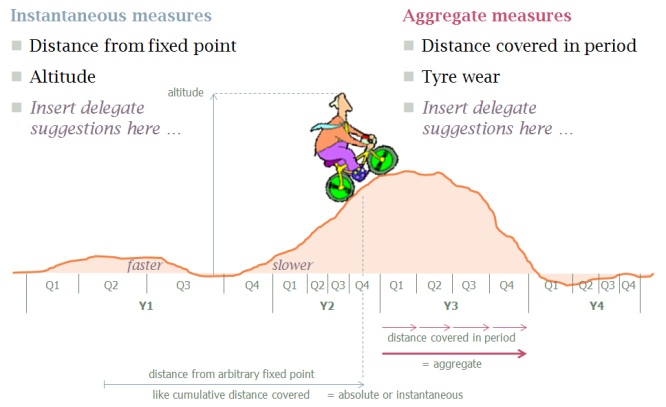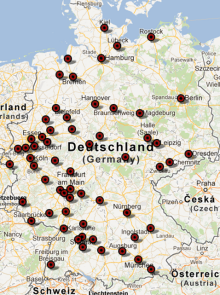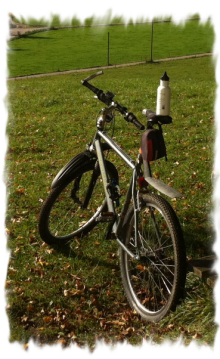Our 17th annual STEM User Group Meeting offered ‘a learning agenda to challenge existing thinking’ – immediate feedback from delegates suggests that the effort was worthwhile.
 Our showcase event in October at King’s College in Cambridge, UK, attracted 18 delegates from 10 organisations. The heavy intellectual content was prominent in the pre-event publicity and the two days were dominated by what was effectively a master-class training session on the new aggregate handling functionality in STEM version 7.3.
Our showcase event in October at King’s College in Cambridge, UK, attracted 18 delegates from 10 organisations. The heavy intellectual content was prominent in the pre-event publicity and the two days were dominated by what was effectively a master-class training session on the new aggregate handling functionality in STEM version 7.3.
The remaining sessions were more focused on information design for eSTEM business models on the web and future STEM interface developments, and were complemented by two guest presentations, all described in more detail below. The modelling topics covered include installation and maintenance engineers, LTE and backhaul, airport visitors and air conditioning, water supply, cake and energy consumption.
The full proceedings
of the event are now available for download from the panel to the immediate right of this article. (A one-time registration is required.) An archive of
shared photos
is also available to registered users who actually attended the event.
| Aetha Consulting |
Analysys Mason |
Chemnitz University of Technology |
| Ciena |
Cisco |
Investaura |
| Juniper |
Qlik Tech |
Telkom SA |
| Welsh Government |
|
|
Figure 1: Organisations represented at the STEM User Group Meeting in 2012
1. Learning all about aggregate handling in STEM version 7.3
The opening session compared old opex models with new and highlighted the
pitfalls of activity-based modelling in a shorter time period context
as an introduction to aggregate handling (i.e., the clear distinction in STEM 7.3 between transformations whose output is treated as aggregate as opposed to those treated as instantaneous). The original problem with opex models running in months or quarters is so much harder to explain than its elegant solution, we arranged for some immediate relief in the second session in the form of two guest presentations described below.
After the initial scene-setter, Robin Bailey continued the theme with a comprehensive review of new and existing aggregate bases for demand from services and resources, and a detailed look at
the nature of a consumable resource compared to a persistent one. The concepts were brought to life in examples comparing contractor hours with employee headcount and another examining airport visitors and the related load on air-conditioning plant.

Figure 2: A cycling metaphor to compare instantaneous and aggregate measures (at a snail’s pace)
Day two kicked off with a so-called ‘wake-up modelling exercise’ on the literal ‘ins and outs’ of a
huge filling reservoir in a water supply system. The resultant modelling covered both
meter
and queue variants of a classic
leaky bucket
algorithm and provided a useful context for explaining some
future additions to the transformation toolbox
in STEM.
A large Stollen
was specially ordered in Germany and hand-delivered as a prop for the second session of the day. The light-hearted example of
cake consumption was used to illustrate the concept of shelf life
for a consumable resource. Our model enabled a comparison of the more efficient pricing for a larger cake and the value written off for any cake not consumed before its ‘use-by’ date.
The last training session examined alternative approaches for matching the power required by network resources with the corresponding supply of energy. The stated challenge to
find the ‘h’ in kWh
heralded an introduction to the implicit time factor
concept for resource capacity. The energy example is most neatly implemented with a consumable
kWh
resource with Capacity = 1 kW and
Capacity Period = Hour
which allows it to be driven directly by an instantaneous
Required Power
transformation. Returning to the earlier example of contractor hours with employee headcount, we also demonstrated how a persistent
Employee
resource can be defined with (productive) Capacity = 30 Hours and
Capacity Period = Month
and then driven directly by an aggregate Maintenance Hours
transformation.
Training opportunity
At over two years in the making, aggregate handling is one of the most ambitious developments in STEM functionality since the ability to run a model in months, quarters and years was added in 1998. One delegate described this as a ‘revolutionary’ extension which will enable not just better opex models but also new solutions and applications in new industries which might include cloud storage and computing, transport and delivery logistics, serviced properties and energy supply, to name but a few.
Please contact Implied Logic Sales to arrange catch-up training on these new concepts, or any of the other recent additions to the STEM platform.
2. Guest presentations
Manfred Illenberger from Cisco delivered a presentation entitled
Calculating the real Charge per Connection in a multi-service bundle
which examined issues around calculating a meaningful
cost per customer. In a service hierarchy with one main service (or user) and optional ‘sub-services’ driven from the main service, one may want to determine, e.g., the average (total) charge per main service user. Manfred demonstrated the use of a collection element to aggregate the costs, and then the more advanced technique of
defining a custom result
to only count connections for the main service (rather than double counting across all services). Audience feedback suggests that more examples of less commonly used advanced features would be keenly received and just as valuable as our more typical showcases of brand new functionality.
 Thomas Knoll
from Chemnitz University of Technology followed up with a very rich presentation entitled
LTE network modelling in STEM with a glimpse on life cycle costing. Starting with a brief recall of the
MEVICO project
already mentioned in earlier user group events, Thomas gave a whistle stop tour through a
‘Universal’ LTE model, with particular emphasis on numerous backhaul alternatives in Layers 1, 2 and 5. He finished with a brief discussion of
life-cycle costing
covering five distinct phases of an asset’s life through (i) research and design, (ii) production, (iii) implementation and deployment, (iv) operation, and finally (v) decommissioning.
Thomas Knoll
from Chemnitz University of Technology followed up with a very rich presentation entitled
LTE network modelling in STEM with a glimpse on life cycle costing. Starting with a brief recall of the
MEVICO project
already mentioned in earlier user group events, Thomas gave a whistle stop tour through a
‘Universal’ LTE model, with particular emphasis on numerous backhaul alternatives in Layers 1, 2 and 5. He finished with a brief discussion of
life-cycle costing
covering five distinct phases of an asset’s life through (i) research and design, (ii) production, (iii) implementation and deployment, (iv) operation, and finally (v) decommissioning.
Thomas has kindly allowed us to share a copy of his slides together with the download of the main proceedings mentioned above. Unfortunately Manfred’s presentation was more ephemeral as a live demonstration of the model without slides.
3. Business models on the web and future developments
The final session on day one provided an update on the latest eSTEM developments for publishing business models for the web. The latest generated
HTML 5 interfaces
were compared with the original Flash approach demonstrated one year earlier, and then we demonstrated the latest generated grid and tab features and service features such as (i) saving values or defaults to load at a later date, (ii) creating dynamic reports to download in
.xlsx
or .pdf
format, and (iii) tracking and logging activity on the server. The session concluded with a review of the pros and cons of the Implied Logic
hosted eSTEM solution
as a compelling alternative to managing an internal IT solution.

Figure 3: A generated web interface is uploaded to be accessed and run from the eSTEM server
Free trial of business models on the web
Please contact Implied Logic Sales
to arrange a free trial of this eSTEM functionality.
The closing session on day two was the traditional look-ahead session where we preview current developments in progress and anticipate initiatives of a more conceptual nature. An extended update on STEM’s increasing online presence was complemented by a more down-to-earth discussion of potential solutions to the so-called
right-click
and enter
gotchas for people new to C-STEM. Finally we were very happy to demonstrate an early prototype implementation of the
integrated online help and user guide in HTML format
which will replace the current separate WinHelp and PDF documentation resources in the next major update to STEM.
4. Anticipating the next STEM User Group Meeting
 The dates for next year’s event are already confirmed as Wed–Thu 02–03 October 2013, and we will be meeting at the same venue of King’s College in Cambridge, UK. We encourage you to mark these dates in your calendar and hope to see you next year. The provisional agenda will be advertised in our April 2013 newsletter.
The dates for next year’s event are already confirmed as Wed–Thu 02–03 October 2013, and we will be meeting at the same venue of King’s College in Cambridge, UK. We encourage you to mark these dates in your calendar and hope to see you next year. The provisional agenda will be advertised in our April 2013 newsletter.
Finally, here is proof that consumable resources and cycling do mix!